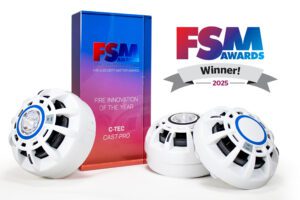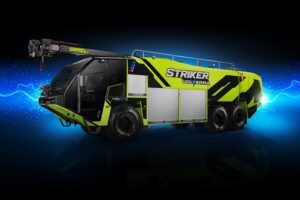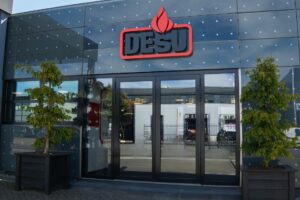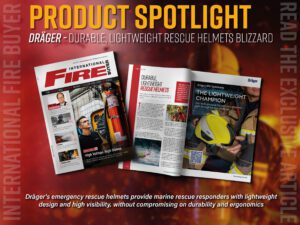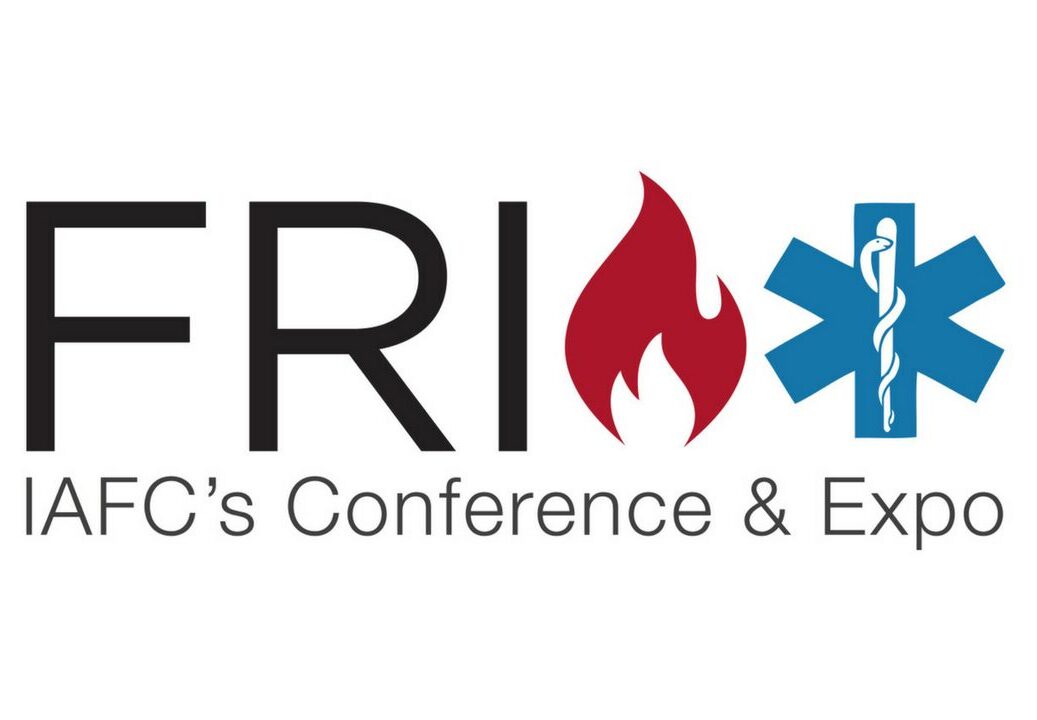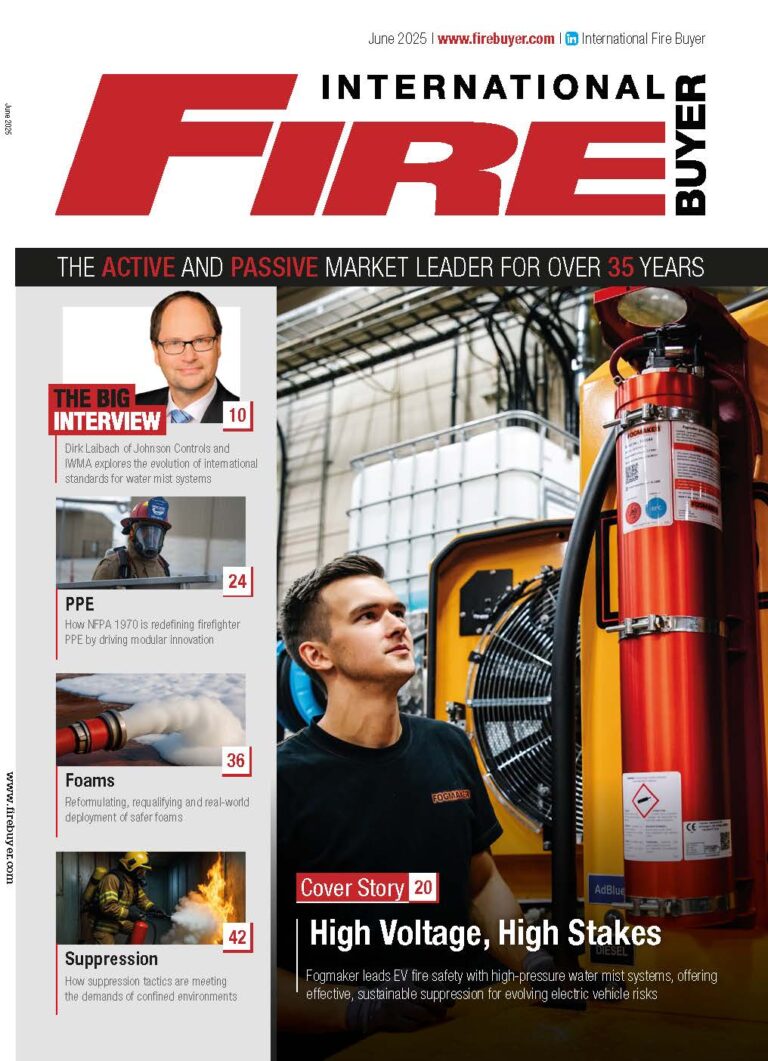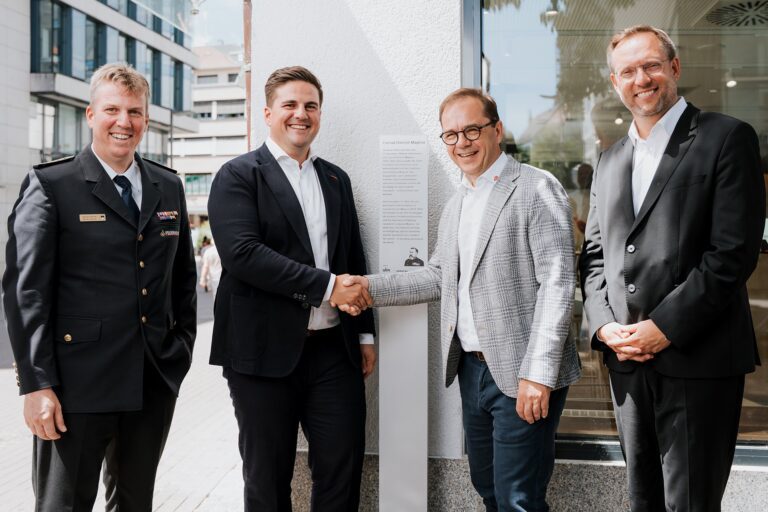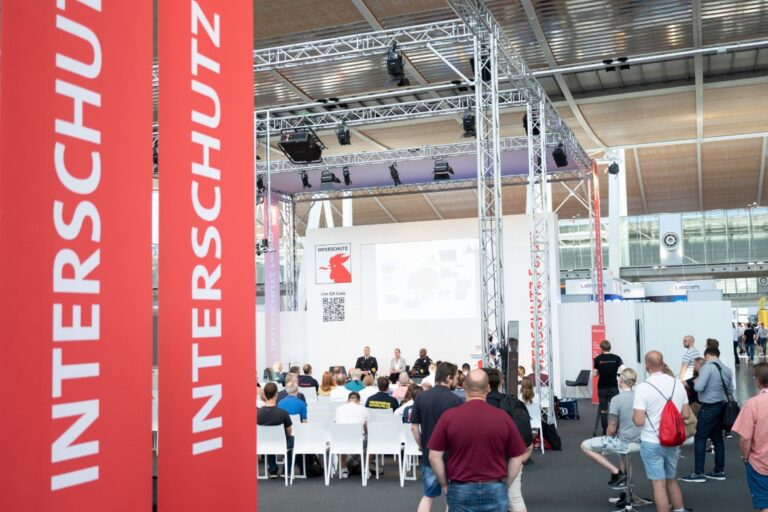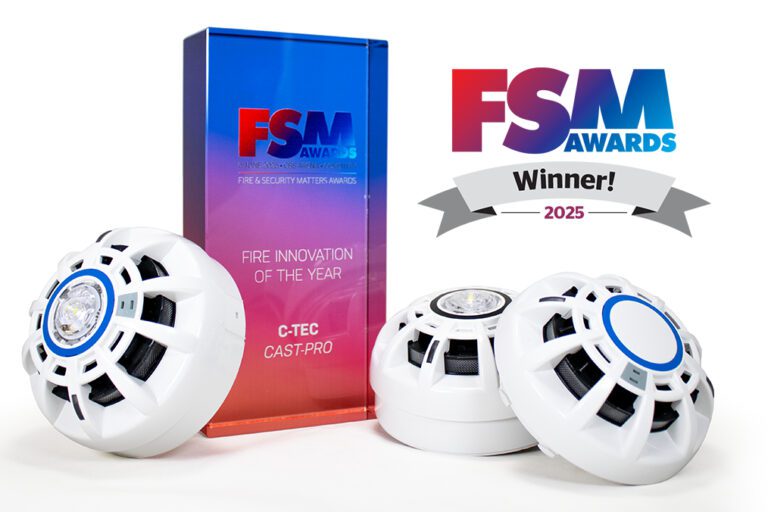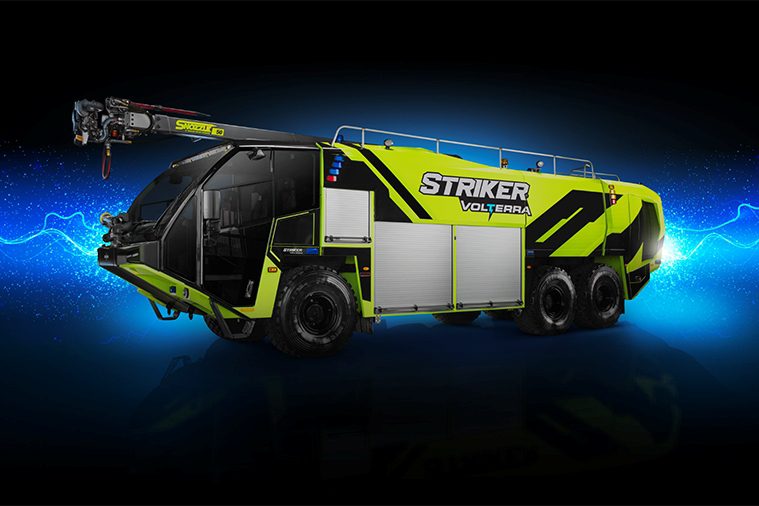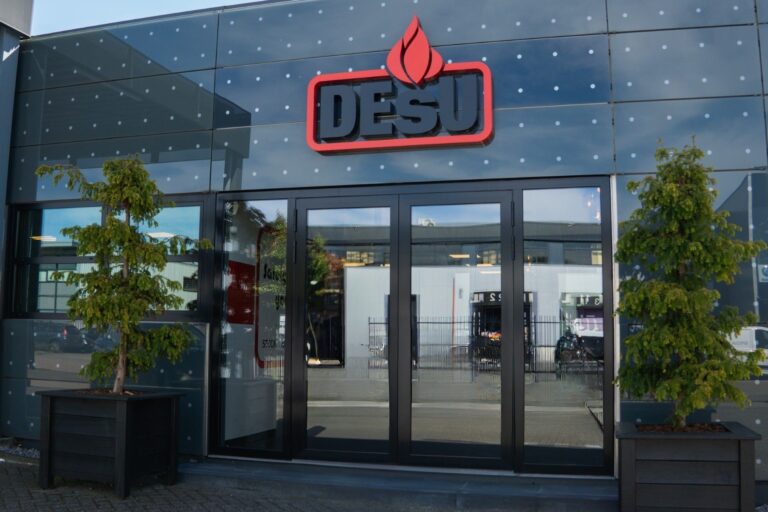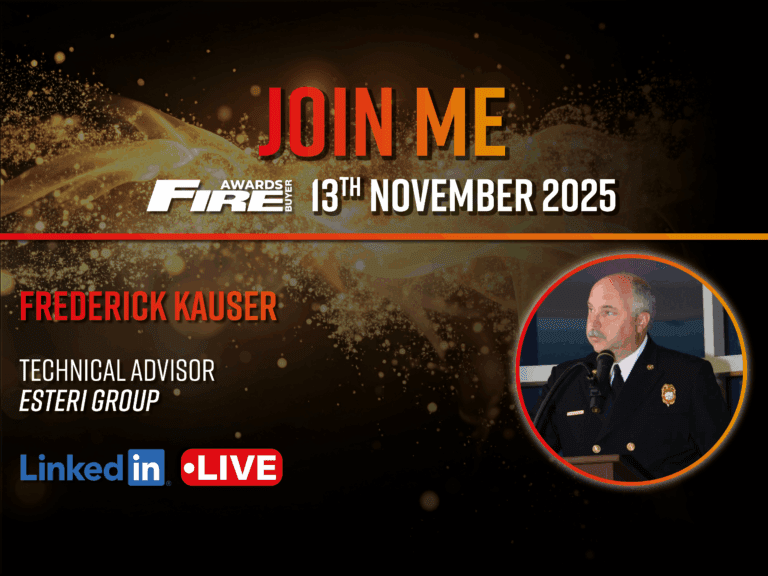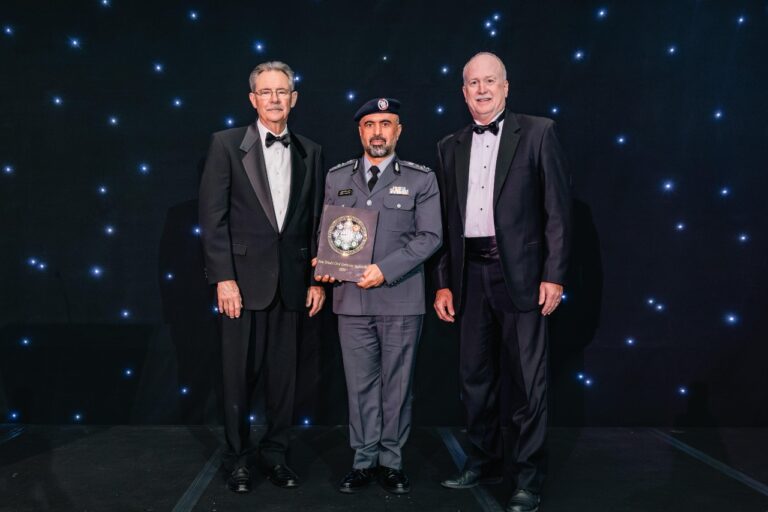Mike Tarbard, EMEA Product Manager at Scott Safety, tells International Fire Buyer
about the revolutionary new X380 thermal imaging camera and its applications
Tell us about the X380 thermal imaging camera and the technology behind it In the market at the moment, there are quite a few thermal imaging cameras for customers to choose from. You can break them down into three basic areas: There are price-led products, traditional, standard cameras and what we believe are the more advanced products. The reason we bracket ourselves in that last category with the X380 is to do with the situational awareness of the fire-fighter. Traditional cameras are excellent for search and rescue applications, as is the X380, but with the new camera you also have the ability to understand the environment a bit more. We use the term ‘situational awareness’. The X380 has a number of features that allow fire-fighters to understand the fire environment that they are in. For instance, we have a hot-spot tracker feature, which is a unique technology that pinpoints the highest pixel on the screen to find the hottest point at the fire scene. That can be used for a number of applications. With the rise of cold-cut systems, you can use our camera as part of the process: You would use the hot-stop tracker to find the hottest spot on the outside of the building, or the hottest part of a wall, and from there you can engage the cold-cut system to pierce through that area and extinguish the fire. Hot-spot trackers can also be used to look inside the fire and find the hottest point. It can be used to understand if there is potential for the ceiling to collapse around them. By identifying the hottest (and therefore most prone to collapse) areas on the floor above, fire-fighters will know which areas to avoid walking under. Equally, the X Series cameras are fitted with a cold-spot tracker, which can be used for a range of applications. Fire-fighters can use it to determine if there is a gas leak in the environment. It can also be used in a similar way to the hot-spot to find safe places to walk. You would point it at the ground instead of the ceiling if there is a basement fire, for example, and find the coldest parts to walk across. The cold-spot tracker has also been used to locate fallen fire-fighters. The breathing apparatus system on their back has quite a cold element to it, and the tracker can home in on that as the coldest part of the fire scene. In a smoke-filled room, the cold spot tracker will hunt down the coldest point. The X380 also features colourisation technology, which is common on many thermal imaging devices nowadays. However, ours differs because it is a transparent system. It has a number of sensor modes that helps provide a complete image of the fire scene. What our product offers that others don’t is a complete scale of colours and heat temperatures as soon as the fire-fighter enters the scene. What you tend to find with the X380 is that fire-fighters are learning that the floor that they are about to crawl on, to keep as low as possible as they were trained to do, is as hot as the highest point in the room. It’s allowing them to understand the scene so much better, as the information is so clear and is coming to them at such a precise level. The difficulty we have as an organisation is allowing fire-fighters to understand the potentials for advanced thermal imaging. It’s one of those situations where they need training. We have variations of the X380. There is the standard product where you can just turn it on and perform basic search and rescue tasks, but to the trained individuals that use it more often, they can really maximise its potential and make far better tactical decisions as a result. Was the product developed based on market feedback, or were all the ideas created in-house? A mixture of both, to be honest. We have a skill set here based on over 20 years of experience in thermal imaging cameras. We were one of the key founders of handheld thermal imaging technology – in fact, our Technical Director was the inventor of them back in the early 1980s. We have had our trials and tribulations and we are now really good at manipulating the core technology to be extremely sensitive and focused on what the fire-fighter requires. Over the years we have had experience of working directly with fire crews and organisations, who put the cameras through their paces. Of late, we have worked closely with a lot of brigades who have a slightly more advanced view and can truly make the most of the capabilities of our product, and they are starting to learn and teach fire behaviour classes as a result. In that respect, the camera can be a product that all levels of fire-fighter can use. It boils down to how much you, as an individual, want to learn about thermal imaging. What are the main applications for the product? We are in the process of introducing a new telemetry system, which allows the image from the camera to be transmitted back to the command centre. In a high-rise building fire, for example, the main challenge is in actually locating the fire itself. The camera can determine quite quickly whether the fire is above you or below you, depending on the degree of heat being produced. If it’s a raging fire and you aren’t sure where it is, then the camera is sensitive enough to find the hottest spots and pinpoint where it is. The telemetry is something that, once it’s launched, is going to revolutionise the way that fire-fighters understand what is going on in scenes like that. There will be more information going down to the command centre than ever before. How do you see the thermal imaging market developing in the future? I think there are going to be various options out there for fire-fighters in the future. As I said before, there are going to be cameras available that provide a more technical understanding of fire behaviour. That information will then be transmitted out to a senior commander, who can then create a map of what’s going on around them. I think there will be cameras that fire-fighters use purely for search and rescue, and cameras are going to start appearing in various applications. What I mean by that is that there are manufacturers that have links to breathing apparatus, helmets and so on. You will find that they will come up with their own versions of hands-free cameras. The initial technology will allow fire-fighters to see the scene ahead of them, but it won’t be anywhere near as sophisticated as the handheld technology we are seeing now. I think you will see a lot of fire-fighters asking for either the basic or advanced cameras, but then that will evolve into the basic cameras being solely hands-free and leaving the hand-held market open to the more advanced products. What can we see from Scott Safety at Interschutz? We are hosting a Fire-Fighting Futures stand, which was originally the ISG stand before the company was taken over by Scott Safety. That stand is by invite only. We are trialling new bits of kit on the stand and getting customer reaction based on that. We have a huge list of individuals that will be invited to that. On the main Scott Safety stand there will be various products, but with a focus on thermal imaging. We are in a position as a manufacturer to be able to offer our expertise to other companies, such as those that produce drones, to try and integrate our products with theirs. We hope to have lots of meetings along those lines at the show. We will also have a robot on the stand that is something we have been working on with Northamptonshire Fire Brigade. It’s a robot that they have in commission for their counter terrorism operations team. Northants is a brigade that has a slightly different management structure to others in the UK, in that the police and fire departments are all under the same control. This particular unit has a robot armed with a thermal imaging camera and a cold-cut system, as well as other gadgets that can be used for both fire-fighting and counter terror operations. That will be on display on the stand as part of our potential OEM offering.



